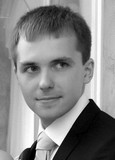NEW APPROACHES IN ASSESSING THE COORDINATION ABILITIES OF STUDENT YOUTH
Keywords:
physical training; coordination abilities; cadets; assessment of the level of preparedness; modified test; educational organizations of the Ministry of Internal Affairs.Abstract
Objective of the study was to determine the effectiveness of the test for assessing the coordination abilities of students of higher educational institutions.
Methods and structure of the study. The experiment involved 5-year students of universities in the city of Belgorod in the amount of 300 people. They were offered to perform motor and computer test tasks.
Results and conclusions. During the training of pilots, the "Gorelov Test" was used for a comprehensive assessment of coordination abilities. It was proposed to use this test to assess the coordination abilities of students. As a result of testing, data were obtained, the average time of the test in girls is better (7.92±0.25 s) than in boys (8.31±0.33 s). The average time spent on fulfilling 1 stimulus out of 9 was also calculated. And in this indicator, the time for girls (0.88±0.02 s) is better than for boys (0.92±0.03 s). When performing the test, the girls made fewer mistakes. It can be said that the Gorelov Test makes it possible to assess the coordination abilities associated with the body's ability to coordinate motor actions. As a result of the study, a comprehensive method for assessing the coordination abilities of students was determined. Validity assessment of the Gorelov Test showed a high correlation with a number of motor and computer tests.
References
Alekseev N.A., Vakhrusheva P.A. Vliyaniye dvigatelno-koordinatsionnykh sposobnostey na effektivnost obucheniya kursantov priyemam borby [Influence of motional-coordinating abilities on the effectiveness of training cadets in wrestling techniques]. Fizicheskoye vospitaniye i sport v vysshikh uchebnykh zavedeniyakh [Physical education and sport in higher educational institutions]. Proceedings International scientific conference: in 2 parts. Belgorod, 2021. pp. 25-29.
Bernstein N.A. Biomekhanika i fiziologiya dvizheniy: izbrannyye psikhologicheskiye trudy [Biomechanics and physiology of movements: selected psychological works]. V.P. Zinchenko [ed.]. 2nd ed. Voronezh, NPO "Modek" publ., 2004. 688 p.
Kuzmin V.V. Faktory razvitiya utomleniya v usloviyakh myshechnoy deyatelnosti, vliyayushchiye na tochnost dvigatelnykh deystviy [Factors of development of fatigue in conditions of muscular activity, affecting the accuracy of motor actions]. Problemy sovremennogo sotsiuma glazami molodykh issledovateley [Problems of modern society through the eyes of young researchers]. Proceedings national scientific-practical conference. Volgograd, 2021. pp. 525-528.
Lisogor K.A., Sapunov A.S. Razvitiye koordinatsii na zanyatiyakh po fizicheskoy podgotovke u kursantov obrazovatelnykh organizatsiy MVD Rossii [Development of coordination in the classroom for physical training among cadets of educational organizations of the Ministry of Internal Affairs of Russia]. Studencheskiy vestnik. 2019. No. 43-1 (93). pp. 65-67.
Lyakh V.I. Koordinatsionnyye sposobnosti: diagnostika i razvitiye [Coordination abilities: diagnostics and development]. Moscow, TVT Division publ., 2006. pp. 45-58.

Downloads
Published
Versions
- 28-04-2023 (3)
- 19-04-2023 (2)
- 18-04-2023 (1)

